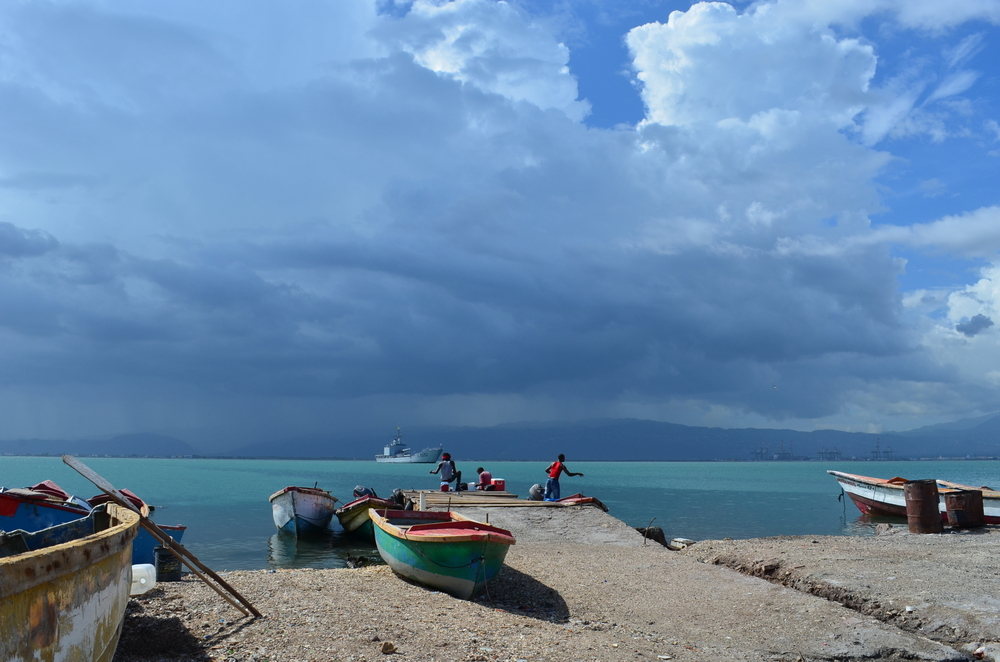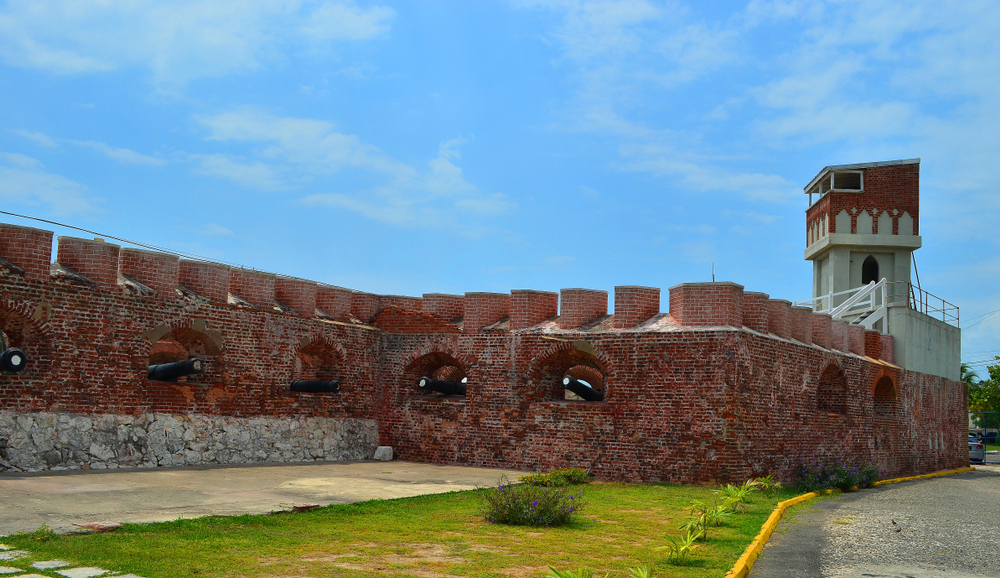Port Royal, in south-eastern Jamaica, is today a sleepy fishing village not far from the capital Kingston. It’s hard to believe that just a few centuries ago it was dubbed the “wickedest city on earth”.

A wild and hedonistic place
To find out why, let’s go right back to the late 15th century, when the Spanish founded a city on a site the Taino knew as Caguay. They didn’t do much with the place, much like the Taino people before them, holding on to it for strategic reasons so they could keep control of the area’s trade routes.
Then in 1655, the English captured the town and renamed it Port Royal. They beefed up its defences and built a considerable number of shops and warehouses. Before long, it was thriving. However, like many ports at the time, it was rough. It’s reckoned that as much as one in four of its buildings was a bar or a brothel. Those who called it home became wealthy on the back of trade in slaves, sugar and wood and recklessly spent the profits on a life of extravagance and excess. Writer Charles Leslie, whose book “A New History of Jamaica” was published in 1739, summed it up:
“Wine and women drained their wealth to such a degree that… some of them became reduced to beggary. They have been known to spend 2 or 3,000 pieces of eight in one night; and one gave a strumpet 500 to see her naked. They used to buy a pipe of wine, place it in the street, and oblige everyone that passed to drink.”
In that immoral place, buccaneers were not only tolerated, they were welcomed with open arms. Tasked with defending Jamaica, these unscrupulous government-sponsored privateers plundered the wider region. One of the most famous was Captain Henry Morgan. In the possession of what was called a “letter of marque”, he launched raids on ports in Cuba, Panama and Venezuela. The document gave him the authority to attack and capture ships belonging to the enemy, in this case Spain.
The earthquake that changed everything
On 7th June 1692, Port Royal was hit by a massive earthquake which was later estimated to have measured around 7.5 on the Richter scale. Two thousand people died as a result of the quake and the tsunami that followed. The process of liquefaction coupled with the loose, sandy soils was a deadly combination and the city didn’t stand a chance.
Overnight, everything changed. Homes, shops and warehouses were flattened. A large proportion of the town, perhaps two-thirds of its area, sank into the sea. For those who survived, it would have been a scene of unimaginable horror. Writing in 1807, author Robert Renny documented the catastrophic events:
“All the wharves sunk at once, and in the space of two minutes, nine-tenths of the city were covered with water, which was raised to such a height, that it entered the uppermost rooms of the few houses which were left standing. The tops of the highest houses were visible in the water and surrounded by the masts of the vessels, which had been sunk along with them.”
At least as many people perished in the aftermath, the injuries they’d sustained too much for the rudimentary medicine of the time. Others, mostly left homeless, succumbed too. The absence of clean water and other basic services created a fertile breeding ground for germs and disease. So many of the buildings had been shoddily constructed, hastily erected in response to burgeoning demand. But even the area’s forts were no match for Mother Nature. Fort Charles survived but nearby Fort James and Fort Carlisle were both casualties.

The Pompeii of the Caribbean
Port Royal never fully recovered from the events of that day. Life limped on, but a terrible fire in 1703 destroyed much of what was left. Later, the British Royal Navy began to rebuild, constructing workshops, barracks, stores and other facilities. Later disasters, such as the earthquake that struck Kingston in 1907 and several hurricanes, would take their toll. However, the 1692 earthquake has left an extraordinary legacy: an underwater town that serves as a snapshot of the Port Royal of the past.
In 1959, the Jamaican government formally allowed the Smithsonian Institute of Washington DC to explore part of the old city. Submarine exploration on this scale had never before taken place. This was the first opportunity to glimpse into the 17th century port and see what life might have been like before the tragedy. A significant find was a pocket watch that had stopped at 11.43am. The discovery enabled historians to confirm the time of the earthquake with confidence. The Nautical Archaeology Program at Texas A&M University in conjunction with the Jamaica National Heritage Trust carried out further research in the 1980s.
The low oxygen levels that characterise the site meant that much of what was lost to the sea was in fact remarkably well preserved. This gave marine archaeologists a greater insight into the past. Cast iron pots sat on top of the charred wood that would once have heated their contents, plates that suddenly toppled off shelves and out of cupboards remained where they fell and trimmings from a man’s beard littered what would have been a yard. This National Geographic clip documents the moment when divers reach a collapsed tavern.
A promising future ahead?
Across the Atlantic in Italy, over 3 million tourists visit Pompeii each year. They witness the impact of the devastating volcanic eruption of 79AD. Could Port Royal in Jamaica be the next big archaeology destination? UNESCO places it on its tentative list. Many of the artefacts recovered are housed as part of the collection of the National Museum Jamaica in Kingston. But it’s not yet possible to scuba dive within the submerged site without an official permit. However, future tourism development is on the horizon.
In what’s seen by some as an optimistic sign for the future, the Marella Discovery 2 docked at a floating pier off Port Royal on 20th January 2020, the first cruise ship ever to do so. There’s definitely scope and support for heritage tourism. Plans have been drawn up to develop the site. There’s a vision to create a visitor attraction based around the waterfront and the historic buildings that remain. When that happens, the stories behind this infamous place can finally be resurrected, putting Port Royal back on the map.

